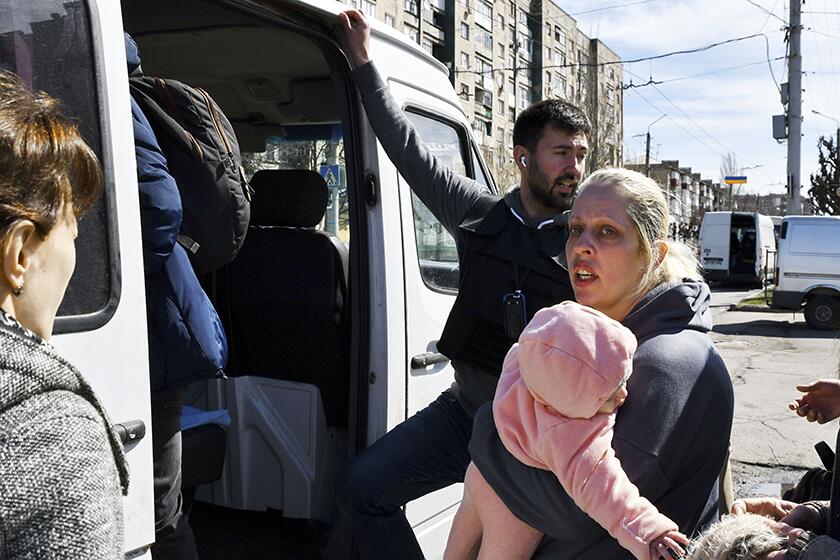Russia lost the battle for Kyiv with its hasty assault on a Ukrainian airport
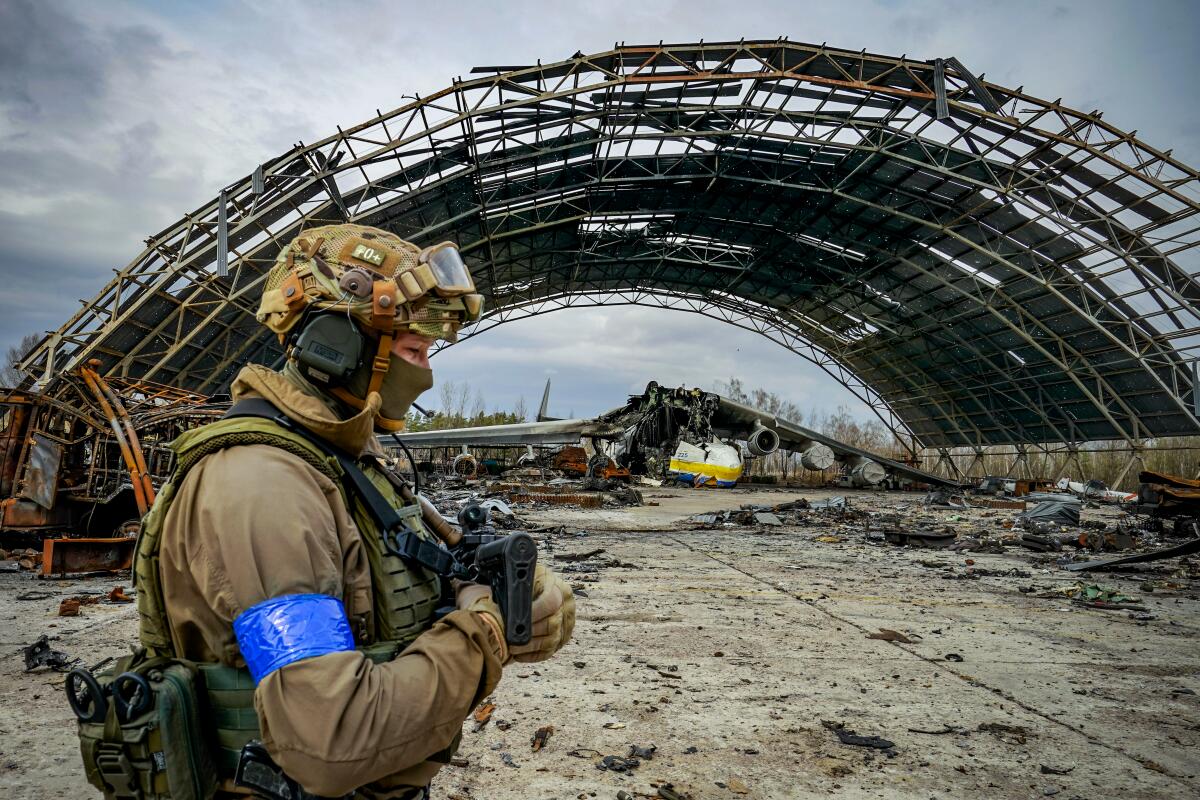
- Share via
HOSTOMEL, Ukraine — Days after Russian forces retreated from Kyiv, the northern outskirts of the Ukrainian capital are littered with the charred remains of blown-up and abandoned Russian tanks, armored personnel carriers and other equipment.
The debris is a stark testament to an assault that was meant to oust the Ukrainian government but became a humiliating blunder for Russian President Vladimir Putin.
Russia’s failure to take the capital came down to a series of misjudgments and strategic errors: an emphasis on vulnerable armored columns, inadequate use of air power, an attack plan that overstretched supply lines, and — most significantly — a clear miscalculation of the Ukrainians’ ability and determination to resist.
But experts say there is one place, more than anywhere else, where Putin’s vision of a lightning strike victory ran aground: Antonov Airport.
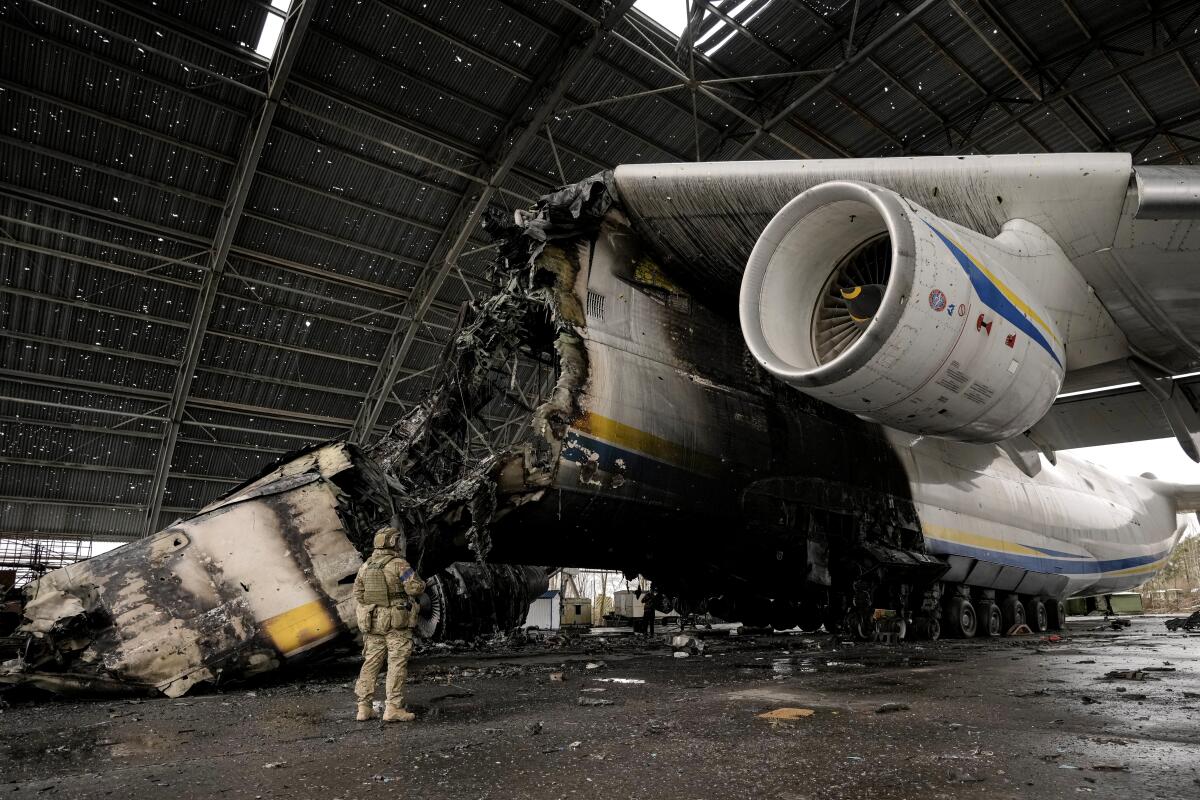
This sprawling cargo airport and military base 15 miles northwest of downtown Kyiv was supposed to be the principal staging ground and logistics hub for a battle-defining Russian thrust into the heart of the capital.
The Ukrainian government was supposed to fall and President Volodymyr Zelensky was supposed to be killed, captured or forced into exile. Experts said that Putin probably planned to install a puppet leader.
Civilians flee eastern Ukraine ahead of a likely Russian offensive, and the Kremlin shuffles its military leadership of the war.
The thinking was that a hasty collapse of the central government would trigger deep disarray in Ukrainian units fighting in the east and the south, possibly resulting in a broad surrender.
“They needed to get into the middle of Kyiv as quickly as possible and raise the Russian flag over a government building,” said John Spencer, a retired U.S. Army major who now chairs urban war studies at the Madison Policy Forum think tank in New York. “At that point you’ve won the war. Yes, you may start the greatest insurgency in history. But you’ve won the war.”
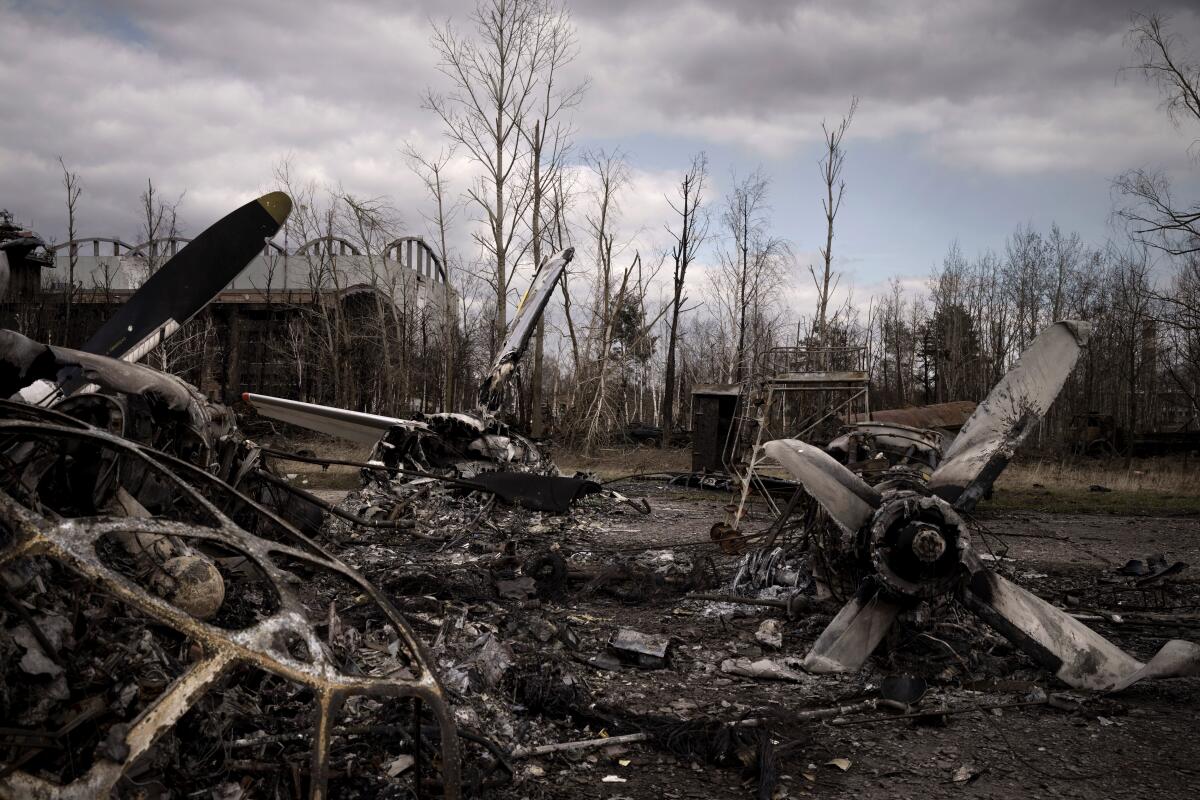
He said capturing the airport was “critical” to the Russian strategy. Antonov has a long runway, ideal for flying in supplies and troops on heavy transport planes.
“You need airfields to bring in force, to bring in tanks, engineers, the necessary armor,” Spencer said.
Unlike the United States in its 2003 assault on Baghdad, Russia launched its ground assault immediately, without first pounding military bases, command and control structures and other strategic sites from the air. There was no shock and awe. That decision continues to baffle many.
“We all expected that Russia would do several days of airstrikes, precision missile strikes, that kind of thing — ‘softening up,’ so to speak,” said Dmitry Gorenburg, an analyst with CNA, a think tank in Arlington, Va. “But then they launched a ground operation rather than waiting a few days. I’m not sure why they were in that kind of hurry.”
For Ukrainian women seeking safety as they give birth, it is an ordeal more terrifying than war. ‘We can’t abandon our patients,’ maternity ward supervisor says.
Russia did expend plenty of air power in its assault on the airfield.
On the morning of Feb. 24 — the first day of what Putin called his “special operation” — low-flying Russian Mi-8 assault helicopters appeared over the airport and began firing rockets. Plumes of smoke rose from the airfield. Russian paratroopers ferried in by helicopter were soon redirecting civilian traffic outside the airport gates.
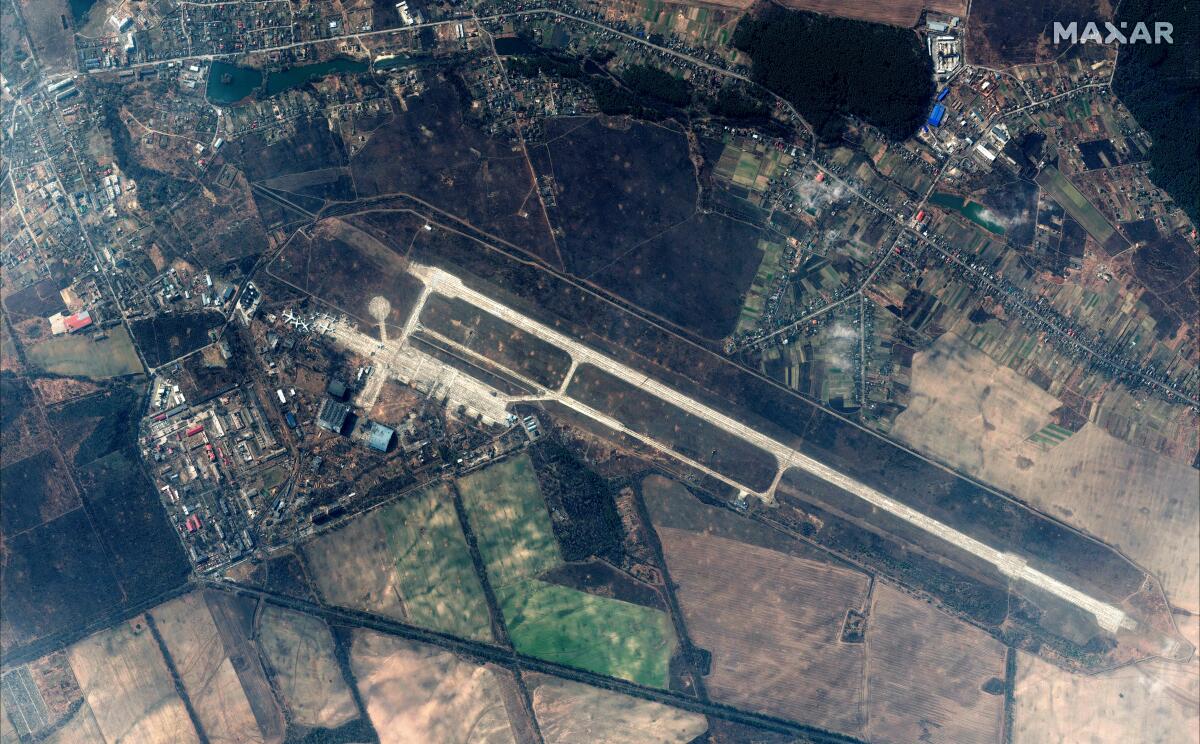
By all accounts, attempting to grab the air base at the very outset of the war made a lot of sense, helping to complement a prospective pincer movement on the capital with nearby motorized columns.
“The initial idea was that cargo planes with paratroopers and vehicles would land here and it should have been an entry point to Kyiv,” said Denys Monastyrsky, Ukraine’s internal security minister, speaking to reporters Friday.
Once the airfield was secured, Russia “could start pouring in a lot of other troops, and start manning checkpoints in the middle of Kyiv,” said Jonathan Eyal, associate director of the Royal United Services Institute, a think tank in London. “If you think about it, had they succeeded, I think the war may have gone very differently.”
A day after the initial attack, Maj. Gen. Igor Konashenkov, a Russian defense ministry spokesman, announced that Moscow had sent 200 helicopters to take control of the airfield.
In fact, authorities here said fighting at the airport continued for days, and Ukrainian forces shot down several helicopters, even as Moscow ferried in wave after wave of paratroopers.
Weeks of fierce combat transformed the airport into a dystopian post-battle debris field, strewn with spent ammunition, rockets, Russian ration boxes, gas masks, and burned and tattered uniforms.
The most conspicuous monument to the fighting is the smashed hulk of an Antonov An-225.
The six-engine behemoth, long the world’s largest aircraft, is known in Ukrainian as Mriya, or Dream, and was a source of intense national pride. No more.
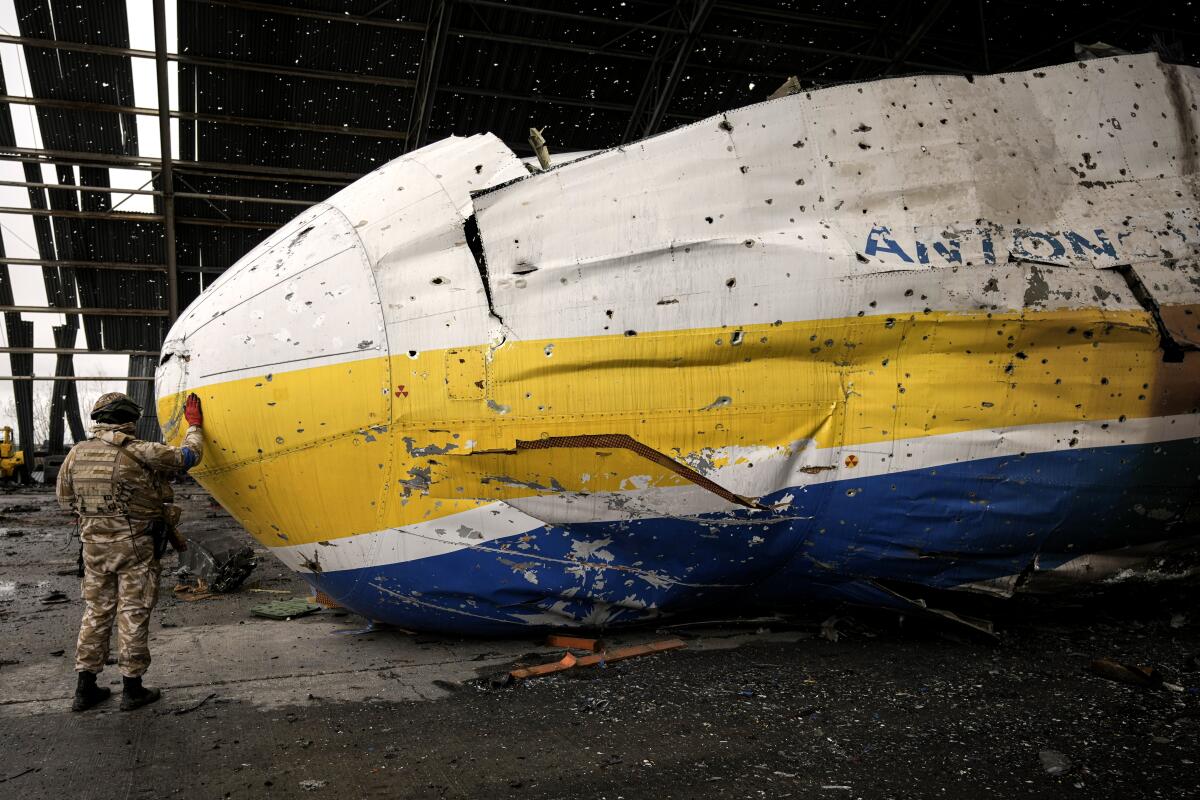
The plane looks like it was gouged by a giant can opener, its fuselage sheared in a blackened jumble of wires and metal, the yellow and blue Ukrainian colors still visible outside the cockpit.
Russia finally secured the airfield, but its forces remained under constant fire, according to Ukrainian officials.
Russia was never able to land large transport aircraft to reinforce besieged forces here and elsewhere in the Kyiv area. Rather than thrusting forward to the heart of the capital, Russian troops at the air base were stuck fighting for their survival.
“That was a turning point,” Eyal said.
With Zelensky and the Ukrainian government still in power, Russian attack columns — lacking anticipated resupply and reinforcement — got bogged down in the capital’s dense northern suburbs.
Ukrainian troops used Western-provided Javelin portable antitank systems and Turkish-supplied drones to pick off the Russian armor, much of which is now rusting away in the suburbs of the capital.
Moscow somehow didn’t anticipate the effect of the sophisticated equipment, and training, that Ukrainian forces had received from the West in recent years. Experts said that Russia’s multi-pronged attack across several fronts was clearly undermanned against a well-armed opponent.
“They tried to do too much,” Gorenburg said. “If they had focused on one objective, like taking Kyiv, they might have done better.”
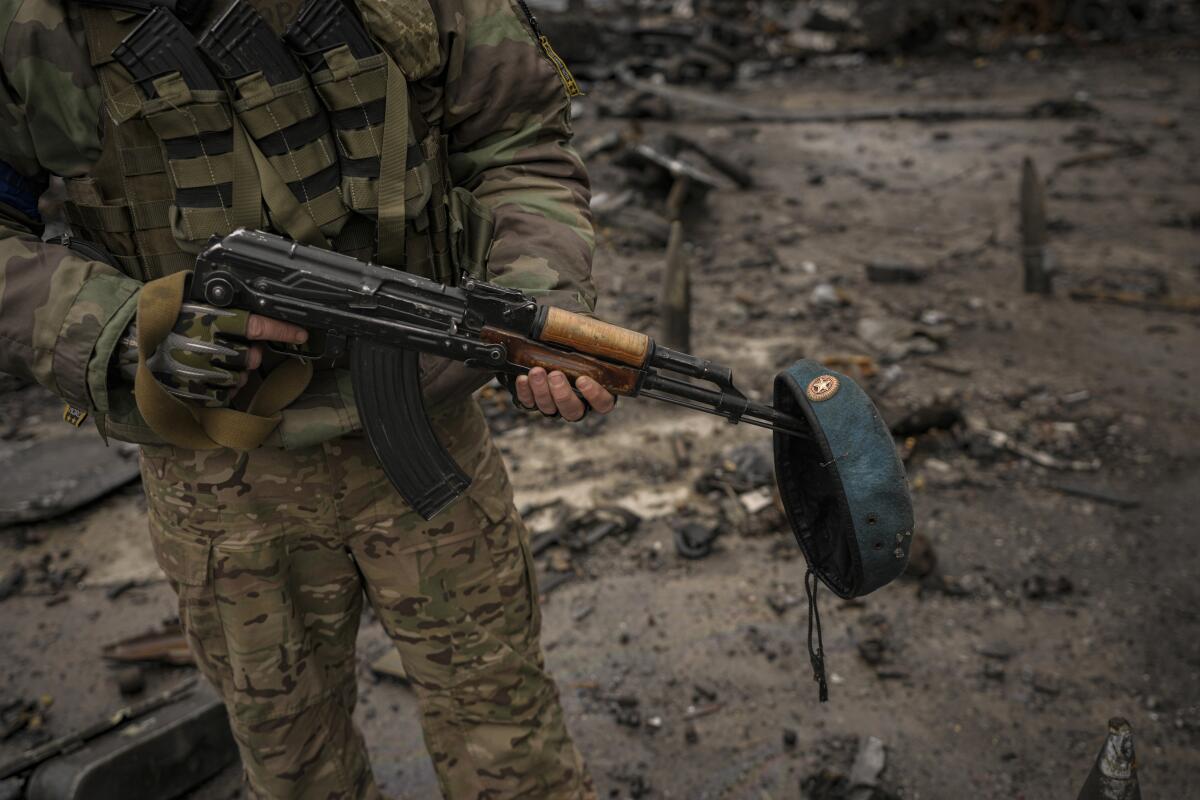
Putin may have more success as his troops shift their efforts to the east, where pro-Russia separatists have been fighting for years. But Russia’s retreat here has also bolstered Ukrainian confidence that its troops can hold off, and even defeat, its colossal adversary.
Such a notion would undoubtedly draw derision from Putin. The Russian leader has long questioned Ukraine’s status as an independent state, publicly declaring its territory, and people, as an extension of historic Russia.
In the view of some, it is Putin’s distorted view of Ukraine that may have led him to misjudge what it would take to win this war — and to disregard the notion that Ukrainians would staunchly resist the Russian onslaught.
“I think the bottom line, the essence of the story, is that Mr. Putin believed the nonsense that he was spouting, which is that Ukraine is a fake state hijacked by a small clique — and the moment you put a finger on it the entire thing would collapse like a house of cards, with the Ukrainian president running away,” Eyal said. “Everything else followed this original error.”
On the streets of Kyiv, where the retreat was greeted with relief and pride, many agree: Putin underestimated people’s willingness to stand up to Russian force.
“I can’t get inside Putin’s head, but I think that, yes, he really expected to take Kyiv in like three days,” said Vitalii Hemych, 28, a restaurant owner. “But our nation is now united. That is the main reason why his plan failed.”
Special correspondent Ilona Shubovych in Vinnytsia, Ukraine, contributed to this report.
More to Read
Sign up for Essential California
The most important California stories and recommendations in your inbox every morning.
You may occasionally receive promotional content from the Los Angeles Times.
